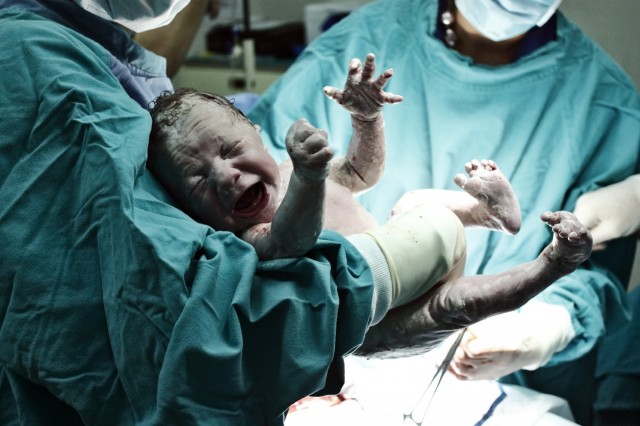By linking hospital discharge records with birth certificates from every California hospital, the center was able to give hospitals timely data on the outcomes of the babies being delivered.
Californian’s push seems to be working. For example, in one case, CHHS cites that 25 participating Sutter Health hospitals were able to make an 83 percent reduction in elective early deliveries in a one-year period.
The findings were discussed Wednesday at a briefing hosted by the California HealthCare Foundation. Advocates touted the power of harnessing big data, making it transparent, and being collaborative in continuing to make improvements to maternity care for both mothers and children in California.
Dr. Elliot Main, director of the California Maternal Quality Care and its California Maternity Data Center, said this major success in maternal care was borne of pressure from multiple points including advice from advocates on the risks of the medically unnecessary scheduled c-sections, buy-in from physicians, hospitals and health care providers, and readily available evidence-based plans to safely change that practice.
Better data also played a large role.
“We want to turn data into action and quality improvement measurements,” he said. “If hospitals are seeing and using this data they will have stake in improving performance measures.”
Over the past 15 years, the state has also seen increases in the number of mothers dying in child birth and the percentage of babies being delivered by c-section, according to the California HealthCare Foundation, but similar collaborate campaigns have started to bring down maternal mortality during childbirth to half the national average — from 16.8 per 100,000 births to 9.2 per 100,000 according to 2010 CHHS data — but experts said there is still work to be done.
Caesarian-section rates vary widely
Between 1998 and 2008, births by c-sections in California rose from 22 to 33 percent of all births and now total more than 165,000 per year, according to the CHHS. Across California c-section birth rates vary by hospital, from 10 percent to 75 percent, and some outlier hospitals have rates as high as 80.9 percent. Only 39 percent of hospitals in California meet the national target to have about one in four births by cesarean.
“We’ve made some improvements in maternity care, but there are lots to still be made,” Main said. “There’s an important role for physicians to work with midwives, and these collaborations require constant gardening.”
To help address lagging maternity health outcomes in the state, CHHS developed a maternity care initiative based on data collected by the California Simulation of Insurance Markets (CalSIM), a model that can be used estimate the impact of various elements of the Affordable Care Act. The State Health Innovation Plan, includes a section addressing maternity health, is currently awaiting federal approval to receive grant funding.
The plan calls for the rate of early elective deliveries (c-sections before 39 weeks) to drop below 3 percent, to reduce c-section rates overall by 10 percent, from 33.2 to 30 percent, and to reduce repeat c-sections from 9 percent to 11 percent, increasing instead vaginal births after a mother has previously had a c-section with their first child.
To reach those goals the state is calling on CalPERS, Covered California, Medi-Cal and the health plans they contract with to ultimately be required to report data in a timely manner, note in patient directories if they participate in the data reporting, and, effective January 2016, switch to value-based payments to their providers.
“Hospitals and doctors would get paid the same regardless of vaginal or c-section,” said Dolores Yanagihara, vice president of performance measurement for the Integrated HealthCare Association. “There would be no incentive to do what brings in more money, but rather to do the right thing.”
Currently, although doctors are often paid the same amount for performing a vaginal birth or c-section, hospitals receive a much larger reimbursement for c-sections.
For Dr. David Lagrew, a practicing obstetrician-gynecologist and chief of medical informatics at MemorialCare Health System, a six-hospital group in Southern California, improving maternity care comes with accepting that data and transparency are becoming more available and expected by consumers in today’s medical field landscape.
